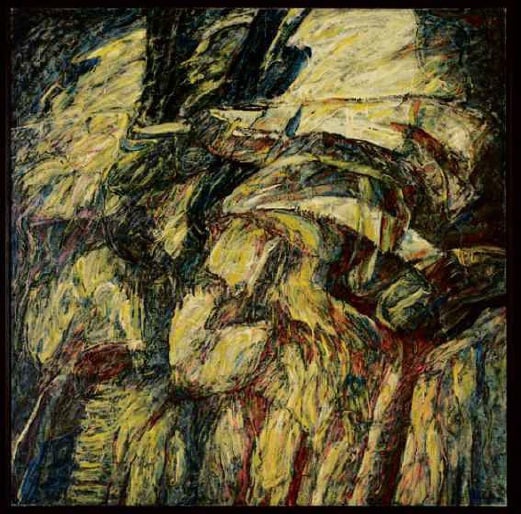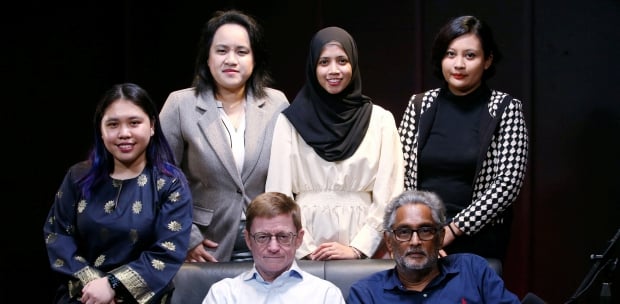MODERNISM, its roots traced to the Industrial Revolution, an era that continued between the 18th to the 19th century. We saw swift vicissitudes in industrial, transportation, and technology which strongly shook the social, commercial and cultural environments of life in Western Europe, North America and ultimately the world.
The way we existed, made a living and travelled changed with new systems of transportation. Artists began rebuffing styles of the past, stressing instead on modernisation and deeper investigations in methods, resources and techniques to make artworks that better echoed modern civilisation.
National Gallery Singapore’s first international and distinctive exhibition, Reframing Modernism, co-curated and co-presented with Centre Pompidou Paris, is a breakthrough show. It presented more than 200 works from 50 artists, half from Centre Pompidou and the other half from Southeast Asia. This is the first time an exhibition demonstrates major Southeast Asian and European artists side by side through its study of one of the most significant creative and intellectual drives of the 20th century — modernism seen from the viewpoint of Southeast Asia.
Reframing Modernism contests prevailing patterns of how modernist painting is viewed and brings forth formerly uncharted standpoints and perceptions which augment the overall dialogue. Adopting a comparative methodology, the show discloses common concerns between the artists and their organisations of works to craft a different and fresh description of modernism.
CONTRASTING ANGLES
Reframing Modernism brings together polar opposites of modernist painting, the ones from Centre Pompidou’s assemblage dates from 1900s-1970s, and paintings from Southeast Asia from 1920s-1980s. This was deliberately done to reconnoiter the parallels and variances in modernist painting from the two regions and beyond.
By illustrating works of artists from these diverse regions into the same vicinity, the purpose was to bring up innovative opt ions to appreciate modernism, reassess the orthodox history of modern art and enquire how we are able to scrutinise the growth of modern art from entirely contrasting angles.
The unique exhibition contains works by Southeast Asian artists such as Le Pho (Vietnam), Nguyen Gia Tri (Vietnam), S Sudjojono (Indonesia), Affandi (Indonesia), Latiff Mohidin (Malaysia), Galo B. Ocampo (Philippines), Georgette Chen (Singapore) and Tang Chang (Thailand), as well as European masters Vassily Kandinsky, Fernand Leger, Marc Chaga ll, Jean Dubuffet, Pablo Picasso and Henri Matisse.
Viewers are challenged to establish their own links and deductions about the history of modernism and its significance to the change of art in Southeast Asia.
“We are pleased to work with Centre Pompidou to develop this exhibition which reexamines the paradigm of Modernism. This is the first time in Singapore that visitors can view artworks from European and Southeast Asian masters in the same space. We hope the exhibition will inspire fresh and interesting perspectives of the received understanding of modernism and modern art,” said Dr Eugene Tan, Director at National Gallery Singapore.
He added that along with the Gallery’s long- term exhibit ions, Reframing Modernism will reinforce its aim to further the understanding of modern art from Singapore and Southeast Asia within a global context.
CURATION
Reframing Modernism is co-curated by Dr Tan, senior curator Lisa Horikawa and curator Dr Phoebe Scott, together with the deputy director of Centre Pompidou’s Nat iona l Museum of Modern Art - Industrial Design Centre, Catherine David and curator Dr Nicolas Liucci-Goutnikov.
“Reframing Modernism testifies to the Centre Pompidou’s international reach and its pursuit of collaborations with prestigious partner institutions around the globe,” said Serge Lasvignes, president of the Centre Pompidou.
He shared that the collaboration with National Gallery Singapore on this unique project has been a most fruitful one and that this co-curated exhibition is an excellent opportunity... for us to learn more about modern Southeast Asian art and how modernism was perceived in this part of the world. The collaboration also gives art lovers in Singapore and Asia the opportunity to view major artworks from the Centre Pompidou, which houses one of the world’s two largest modern and contemporary art collections.”
THREE GALLERIES
Reframing Modernism is shown in the Singtel Special Exhibition Gallery, which comprises three galleries, covering an entire floor area of 1858sqm. There is, as usual, a lot to see, and repeated trips are necessary.
One thing’s for sure: it’s fantastic to see our Latiff Mohidin’s Pago-pago series in the same vicinity as Picasso, Matisse, Kandinsky and Chagall.
There are countless ways of considering Reframing Modernism. Perhaps it is not really what we look at, but rather what we ultimately see and understand. And as poet Wallace Stevens ruminates, there are 13 ways of looking at a blackbird:
Among twenty snowy mountains,
The only moving thing
Was the eye of the blackbird.
The blackbird whirled in the autumn winds.
It was a small part of the pantomime.
A man and a woman
Are one.
A man and a woman and a blackbird
Are one.
I do not know which to prefer,
The beauty of inflections
Or the beauty of innuendoes,
The blackbird whistling
Or just after.
It was evening all afternoon.
It was snowing
And it was going to snow.
The blackbird sat
In the cedar-limbs.
REFRAMING MODERNISM
WHEN Until July 17
WHERE Singtel Special Exhibition Gallery, Level 3, City Hall Wing, The National Gallery Singapore 1 St. Andrew’s Road, Singapore.
Sun to Thu, Public Holidays 10am to 7pm
Fri to Sat, Eve of Public Holidays 10am to 10pm
www.nationalgallery.sg






